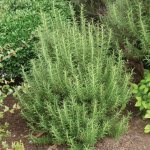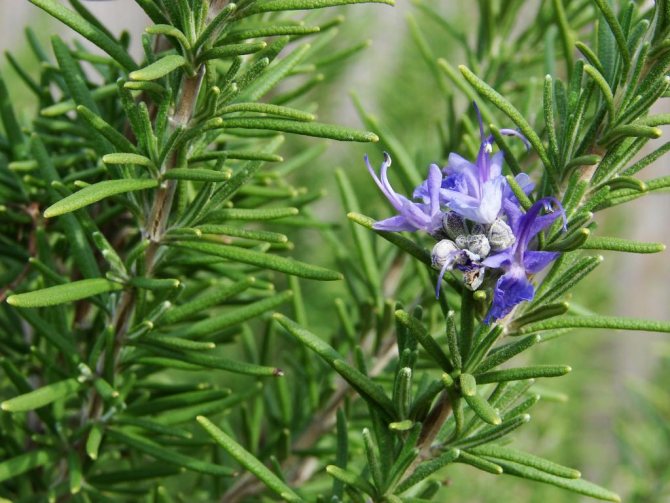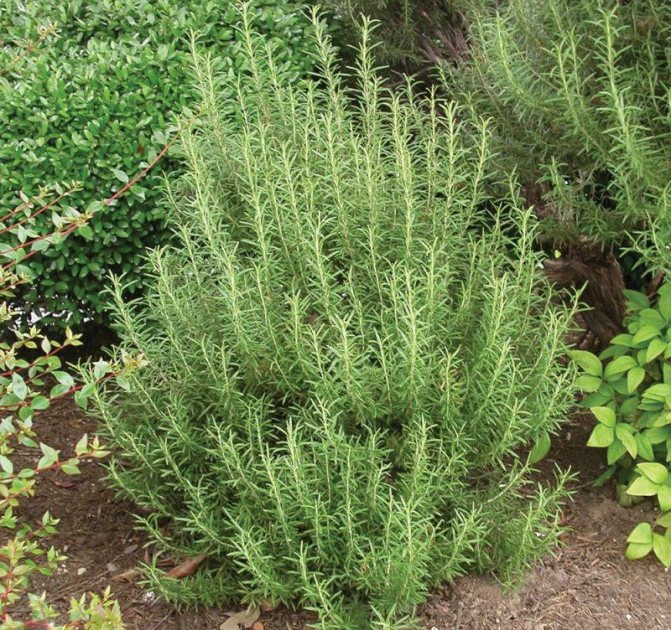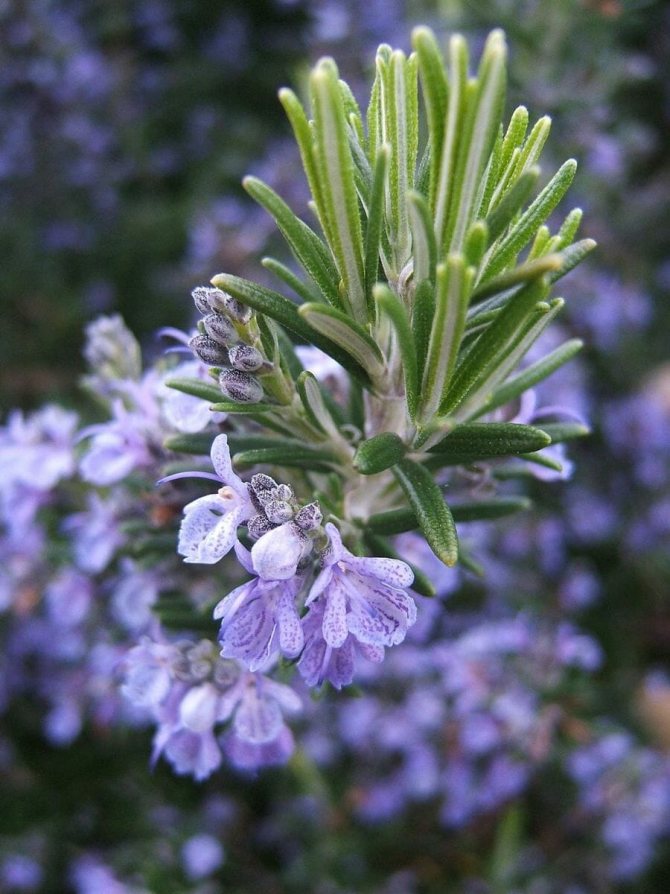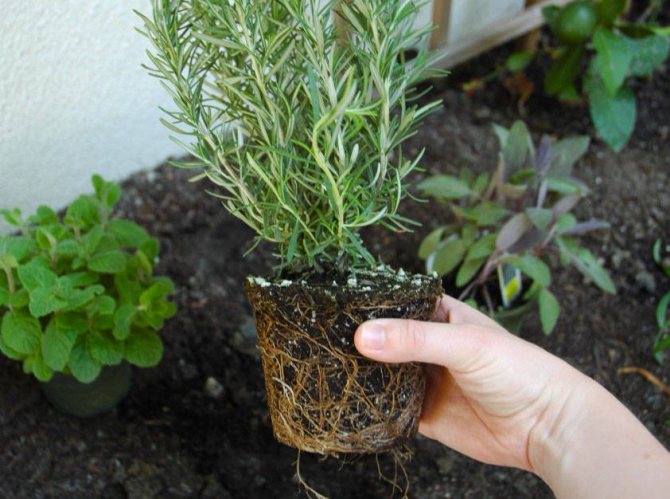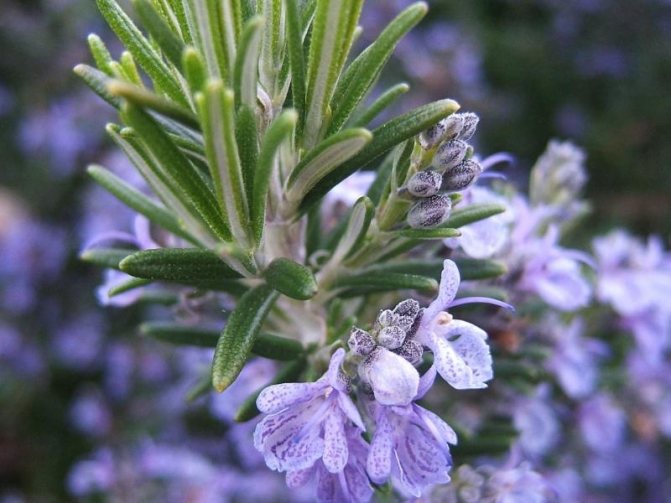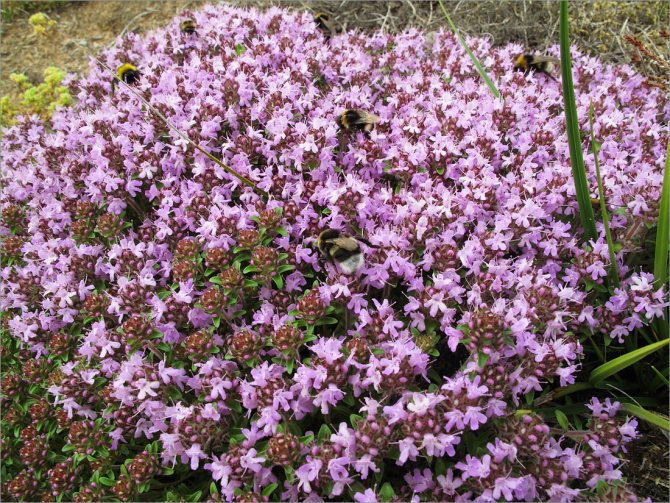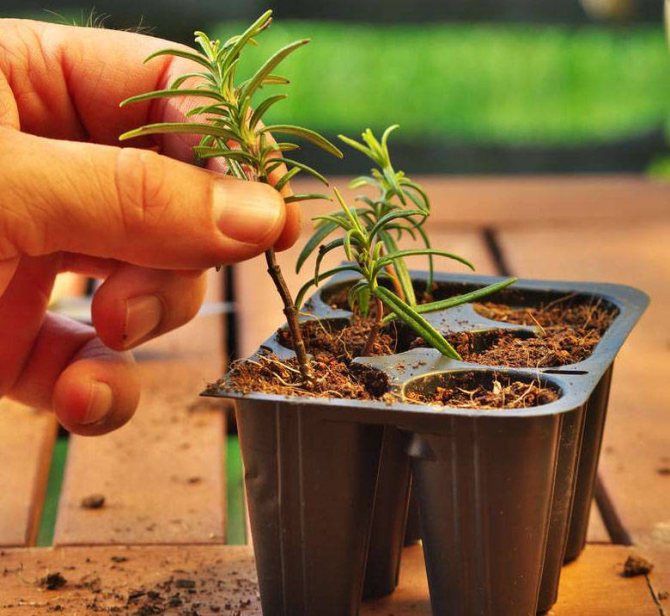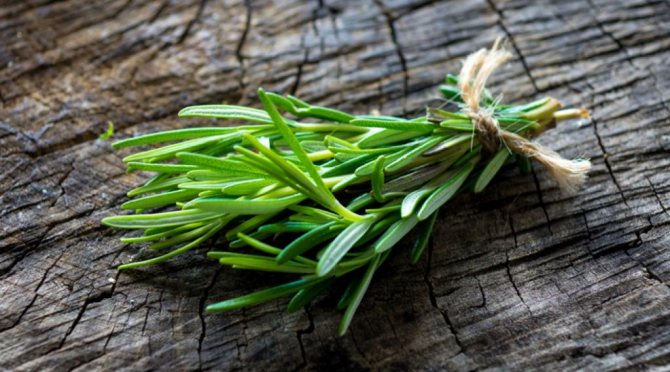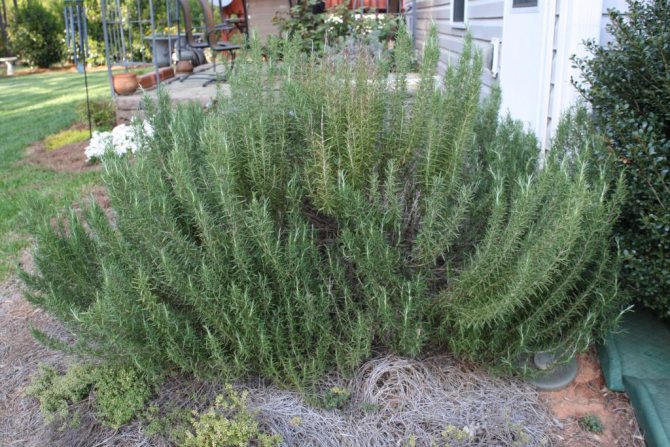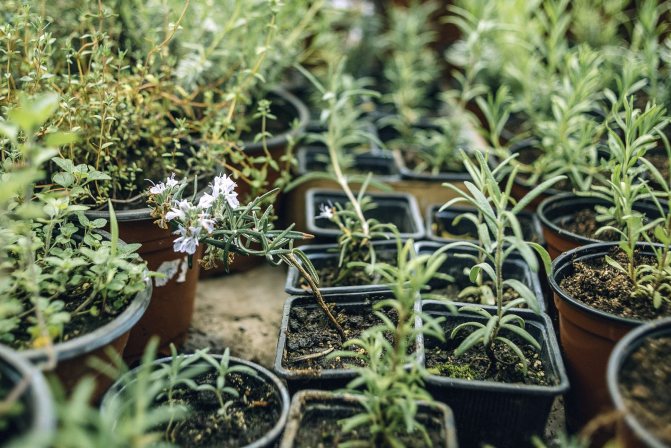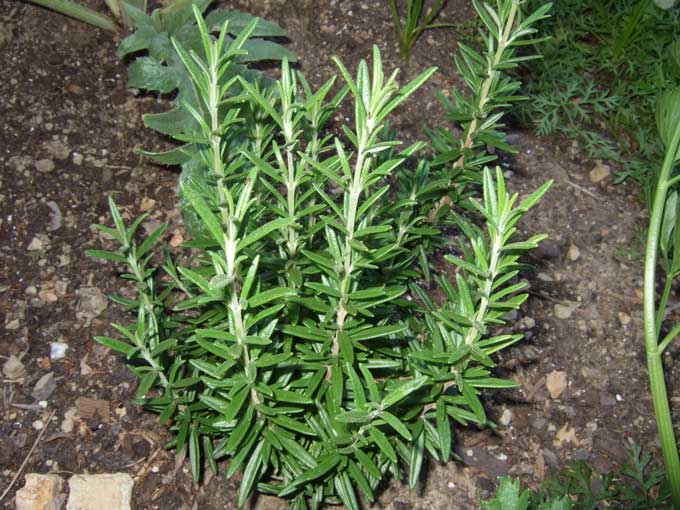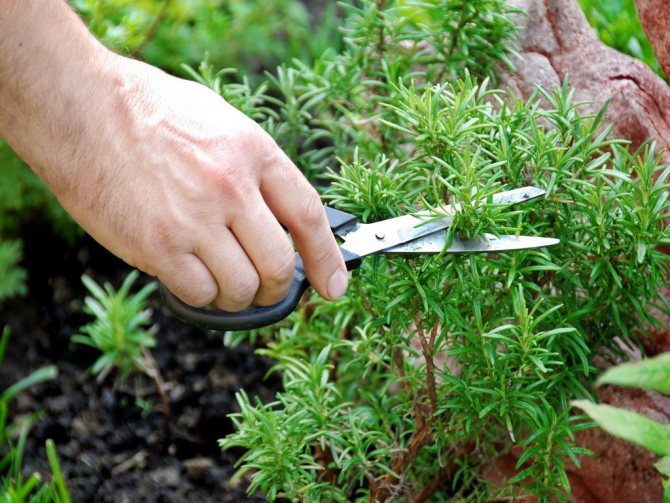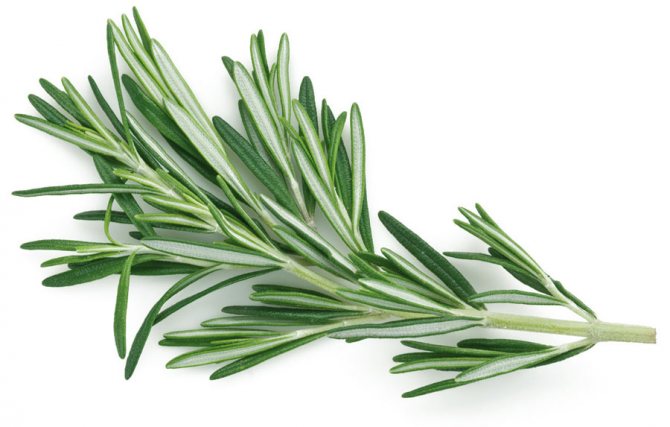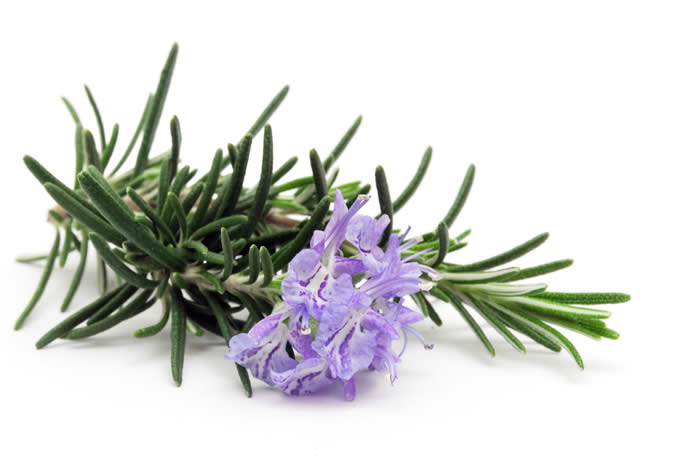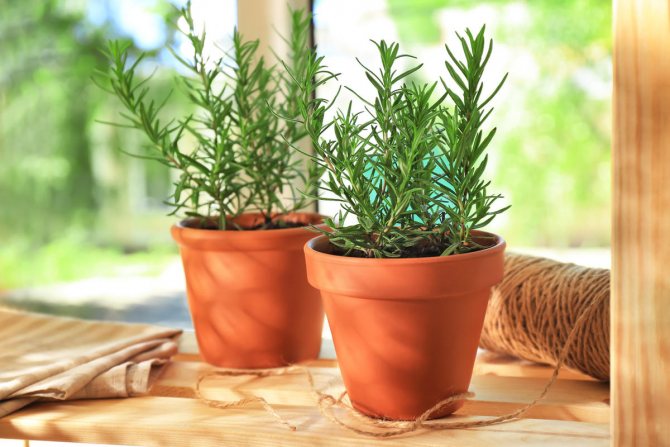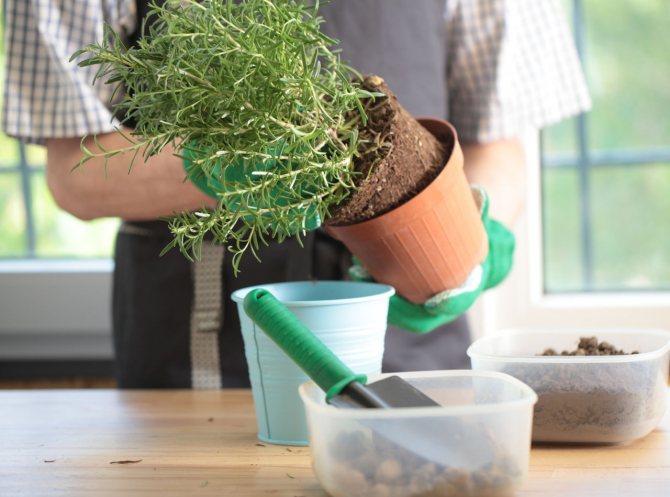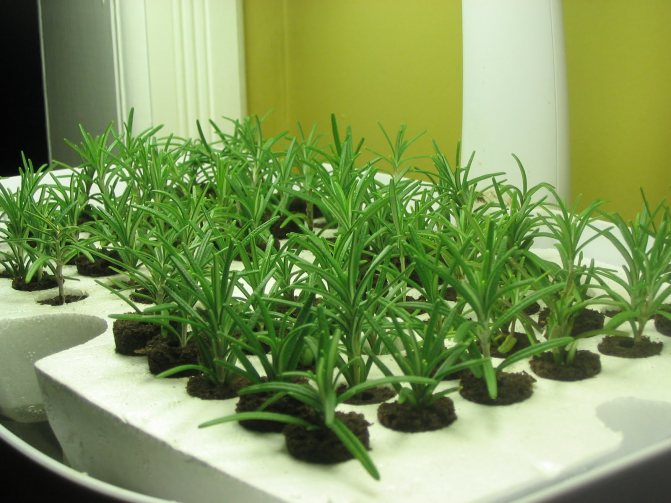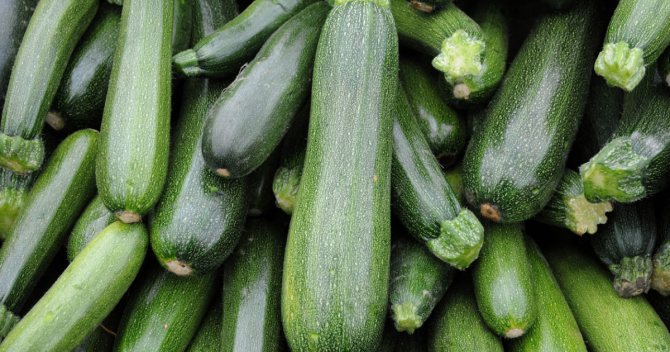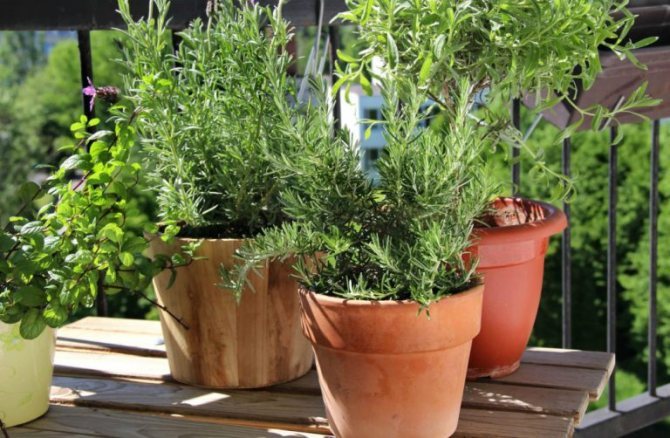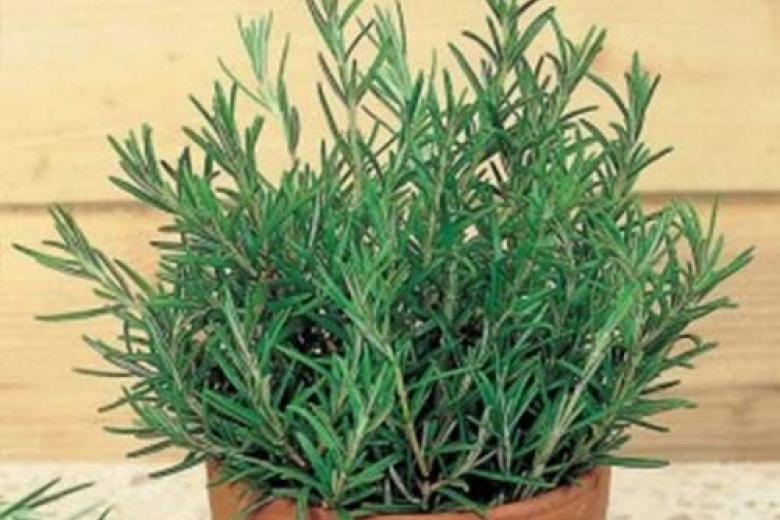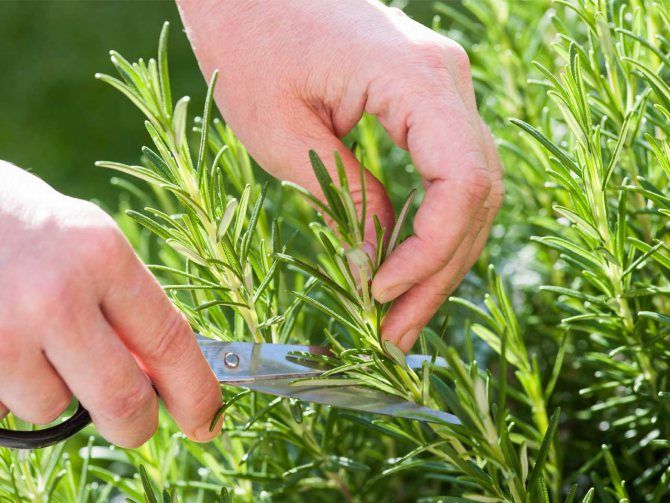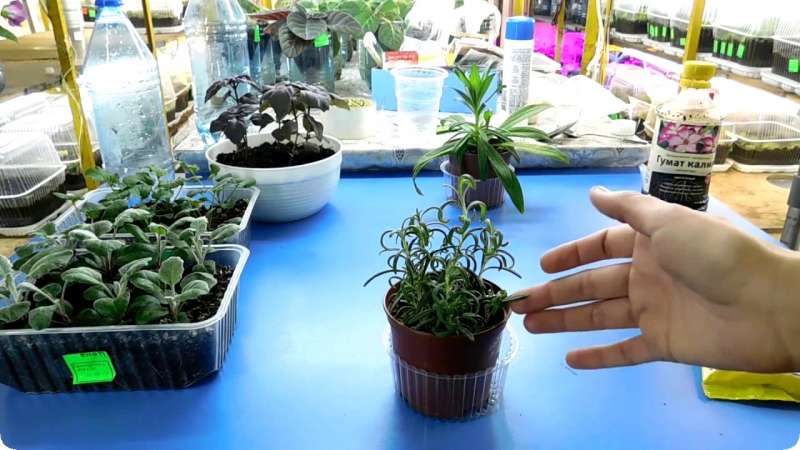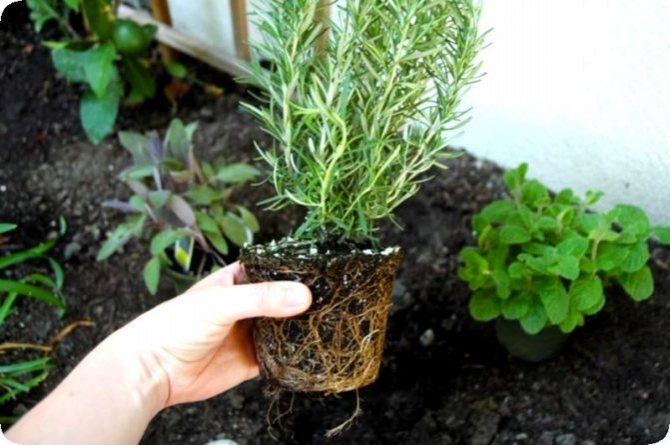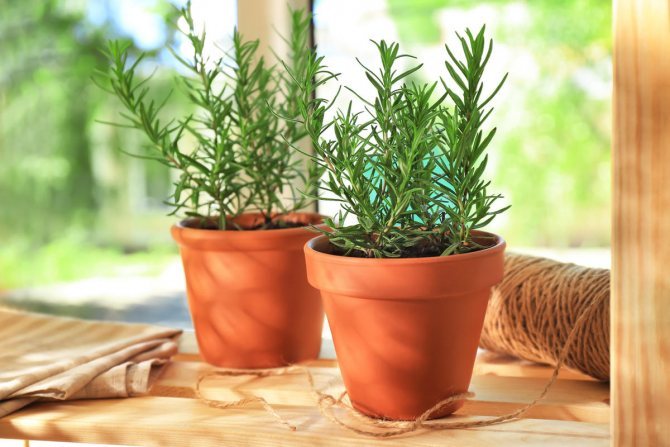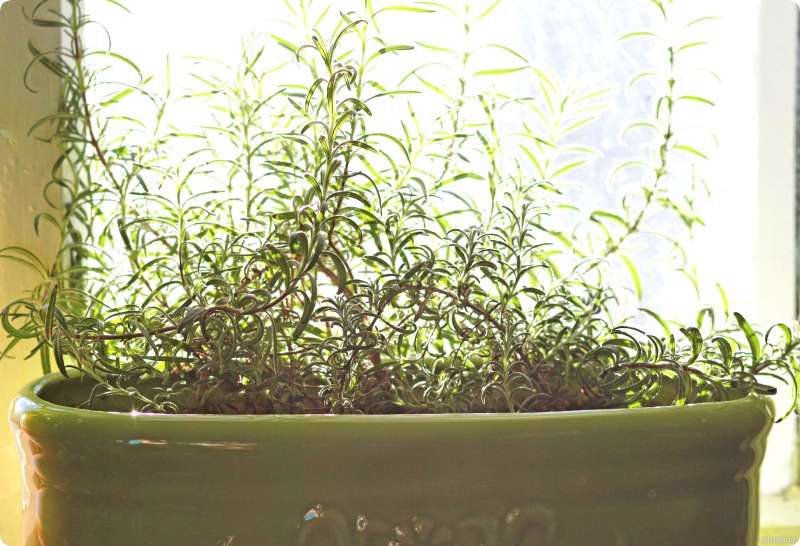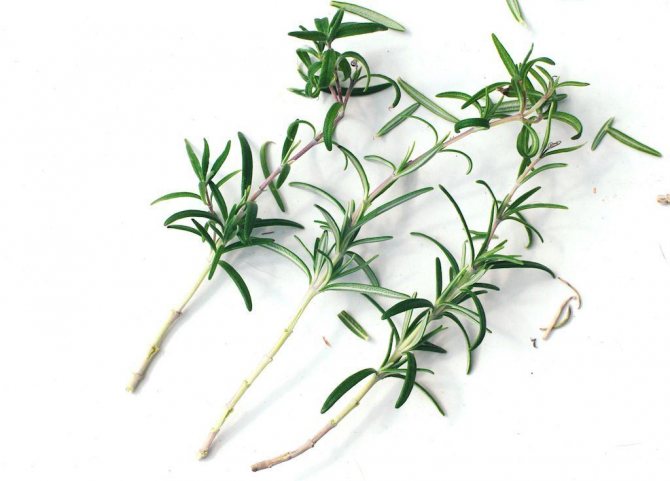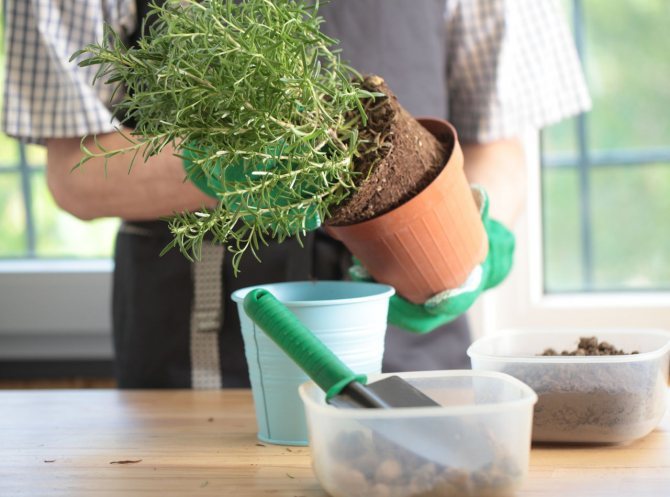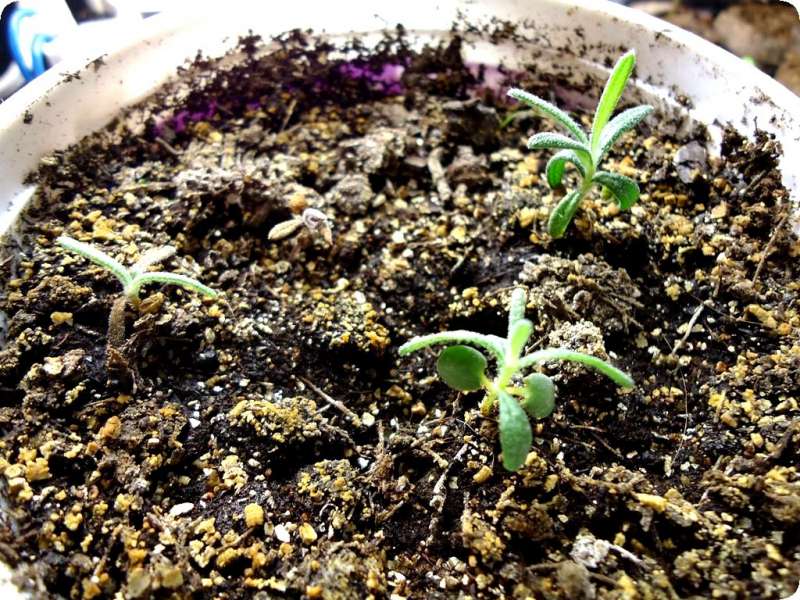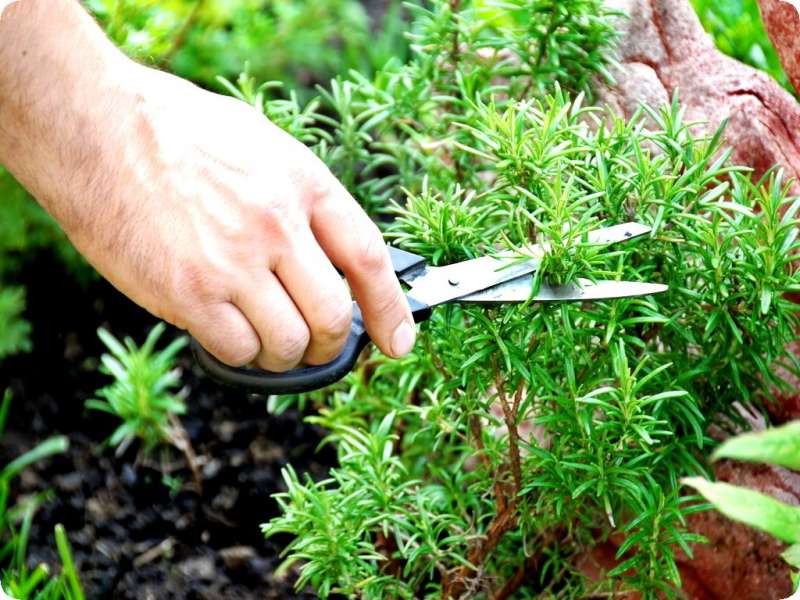Rosemary is a type of exotic plant.
Many people fell in love with this plant, it has an original taste and aroma, and also belongs to medicinal.
In addition, rosemary is a very interesting and beautiful plant, its leaves resemble needles.
Such a bush will become a real decoration of any garden.
This article examines the features of growing rosemary outdoors.
How to plant?
Rosemary can be grown in three ways:
The choice of planting method depends on the personal preference of the gardener. In any case, with proper planting and caring for rosemary in the open field, it will be possible to grow wonderful bushes, up to 150 cm high. The only difference is how much time and effort will be spent on growing.
Growing by sowing seeds
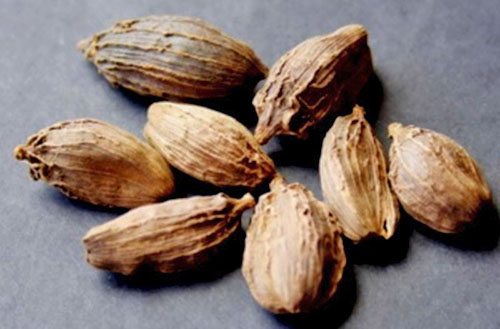
Rosemary seeds are planted in February and early March in small containers with soil.
It is impossible to plant seeds directly in open ground, since the air temperature at the indicated time of the year is usually still too cold.
Before planting, it is advisable to soak the seeds for a day in water, since they usually go off hard and for a long time. It is necessary to carefully plant each seed separately, evenly distributing the rosemary around the entire perimeter of the container. More seeds planted this way will come off.
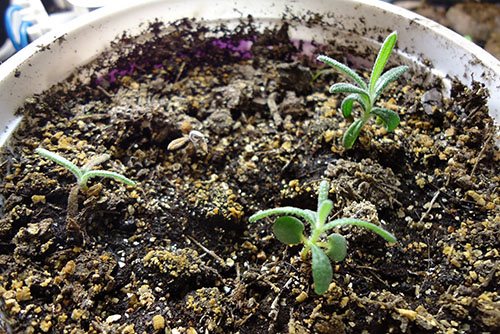

Seeds usually go off for 6-8 weeks, but, depending on the manufacturer, the terms can be slightly longer or slightly shorter. There is no need to rush to be upset if the seeds do not come off at all for a long time. Growing rosemary from seeds is an exercise for the patient.
The resulting bushes from their seeds must be planted in the garden or in the garden to give them more room to grow.
Rosemary by cuttings
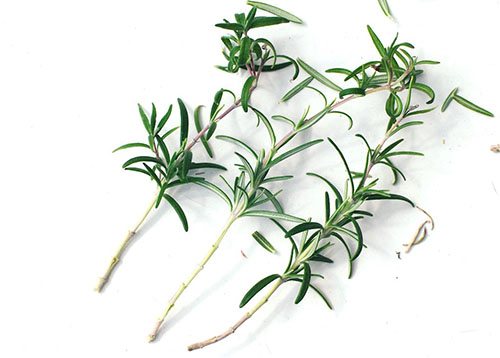

Growing rosemary outdoors using cuttings takes less time, so if there is an opportunity to cut a branch from an adult plant, it is better to use it. It is better to cut the lower leaves of rosemary from the cuttings, leaving only a few leaves on top of the branch. Put the prepared cuttings in water until the root system is formed, which occurs after 3-4 weeks. In this case, the liquid should constantly cover about a third of the length of the cutting.
It is better to use filtered water or from natural sources, but not tap water.
Ready-made rosemary bushes in pots can be purchased in stores. Such a plant is already ready for transplanting into open ground. The gardener should not forget only about the permissible temperature for plant growth (at least 10 degrees Celsius). Growing rosemary outdoors in Ukraine is permissible since March.
Sand, peat (only neutralized), as well as compost and fertilizers can be added to the soil. Like many other plants, rosemary loves loose soil.
Breeding types
Shrub propagation methods:
- Seeds.
- Layers.
- Cuttings.
- Vegetative division.
The most common way is the first of these. Rosemary seeds are pre-soaked and planted shallowly in moderately moist soil.
The distance between future bushes depends on the volume expected by the gardener, on average it is a 10 cm distance. The seeds are ready to grow under the temperature range of + 12-22 ° C. Particularly fertile soil for such sowing is a mixture of gravel and peat (equal proportion).
To propagate the plant by cuttings, you need to separate fresh shoots at the end of June (length - about 8 centimeters; the presence of at least three internodes).
Next, you should place them among the prepared soil at a depth of 6 centimeters; the distance between them should be more than 10 cm, and the desired landing angle should be about 45 °. young shoots tend to quickly grow the root system, so this method is especially effective.
Disembarkation dates
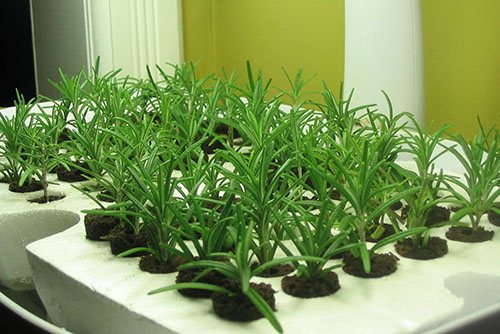

In temperate climates, it is possible to grow rosemary outdoors from about mid-spring, when the soil temperature will be at least 5-10 degrees Celsius. In the northern regions of the Russian Federation, especially in the far north, transplanting rosemary into the ground does not make sense due to the peculiarities of the climate, so it is better to grow the plant in spacious pots in greenhouses or greenhouses.
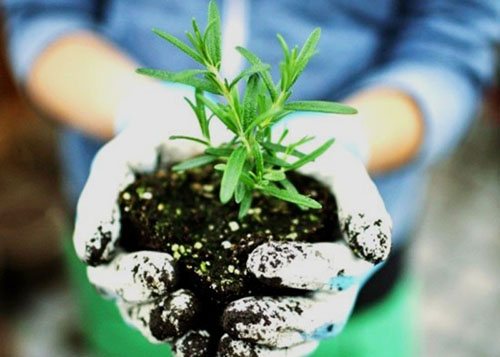

It should be remembered that at a temperature of -5 degrees Celsius, rosemary dies and planting a plant during periods when warm weather can change dramatically is unacceptable. So, growing rosemary in the open field in the Moscow region is best practiced after the 20th of April.
Rosemary grows constantly throughout the year. The periods of growth activity vary with growth conditions and seasonality.
Circumcision and grooming
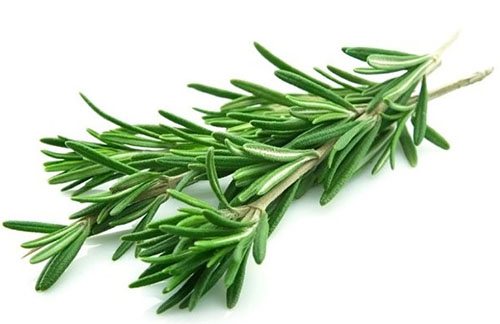

There are several basic principles for planting and caring for rosemary in the garden:
- Do not water the plant too often, as it does not like stagnant moisture. In the rainy season, you don't have to worry about watering at all.
- You need to cut the bushes by tearing off the top of the stalk so that they grow even more.
- It is advisable to plant rosemary on the sunny side, since the plant is very sun-loving.
Wintering
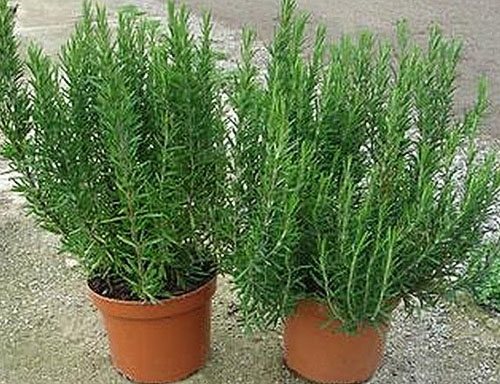

When grown outdoors, rosemary will not survive the winter. The root system of the plant begins to freeze at the onset of the first frost, so for the winter, the bushes must be transplanted into pots.
It is better to store rosemary in frosty weather in cool rooms with an average temperature of 10-15 degrees Celsius. So, for the winter, the bushes can be taken to the basement or utility room without heating or with minimal heating. If it is not possible to keep the plant in suitable conditions, you can put it in a living room. At room temperature, rosemary can also survive the winter successfully. It is possible to grow rosemary again in the open field in the Rostov region from the very beginning of April.
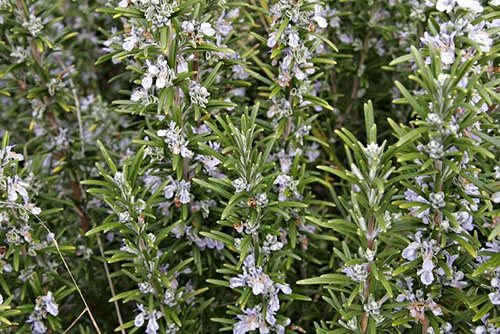

If the bushes are kept in the most suitable conditions in winter, they will bloom with beautiful blue flowers in February-March.
Rosemary is a perennial plant. With proper care, rosemary will retain its spicy taste and smell for a long period, but if the recommendations given in the article are not followed, it will be susceptible to disease and may die.
Video about growing and breeding rosemary
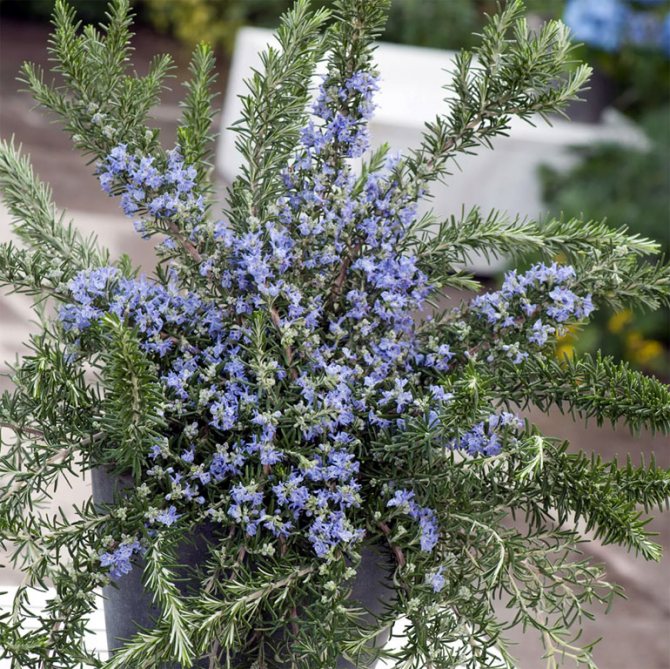

Sun-loving rosemary (Rosmarinus officinalis) is an evergreen shrub of the Clayaceae family that gives the garden a Mediterranean character. The homeland of the plant is the areas located on the Mediterranean Sea. Wildly grows in France, Spain, Portugal, Tunisia, Algeria and other countries of the region. We will tell you in detail how to plant, care and grow rosemary outdoors.
Description of the plant
Rosemary (lat.Rosmarinus officinalis) is a shrub plant originating from the Mediterranean. In many countries, it is grown on an industrial scale. In Russia, Ukraine, Belarus, it is grown as an ornamental, medicinal, spicy plant.
The plant represents in our climatic conditions small shrubs with lignified shoots. The extremely fragrant leaves of the plant are narrow, greenish-gray, reminiscent of lavender leaves.The flowers of the plant are blue or slightly purple.
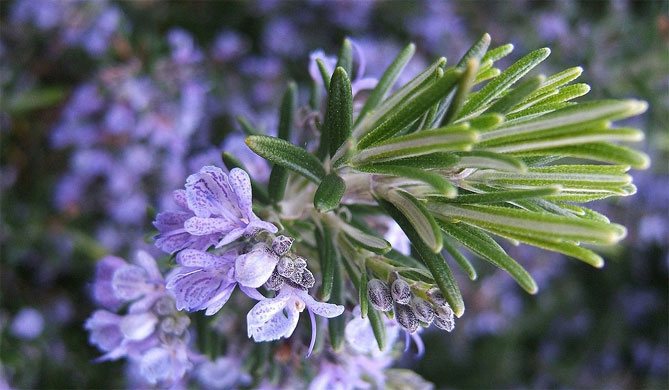

In cold climates, rosemary should be planted in pots so that it can be moved indoors in case of severe frosts. The shrub is suitable for creating a low decorative hedge - you can freely shape it by pruning. Feels great planted in pots on terraces and balconies along with other plants that love the sun in quiet areas of the garden.
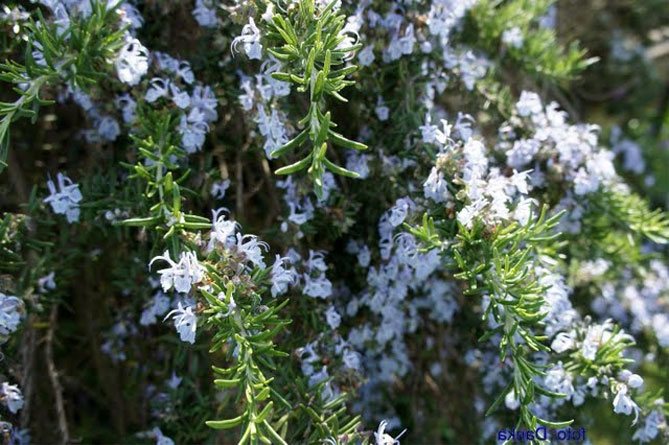

It is interesting! In Mediterranean countries, it was believed that in gardens where rosemary grows well, a woman rules the house. In order not to expose themselves to ridicule, the men pulled up the plants. So in the 16th century, rosemary began to disappear from home gardens.
In its natural environment, the plant forms dense, fragrant, evergreen shrubs that grow up to 2-3 m in height. In our climatic conditions, the bush reaches a height and width of up to 70 cm.
The plant produces tough, erect, tetrahedral shoots. The leaves are lanceolate, with folded edges, dark green above, covered with a silvery bloom below, very fragrant.
A deep (up to 2 m) highly branched root system provides the plant with access to moisture even on dry days from deeper soil layers, which leads to a relatively high plant resistance to drought.
Rosemary blooms in early spring. From April to July, and sometimes longer, the bush is covered with blue or pink flowers. The strong, fragrant flowers attract bees, which convert the nectar into valuable rosemary honey. The fruit of the plant is a nut.
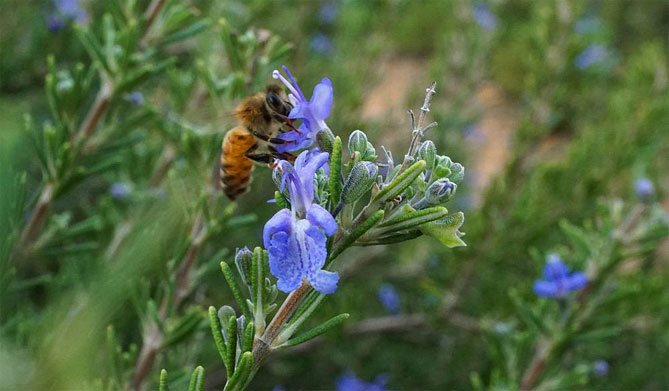

It is interesting! In Europe, since the Middle Ages, rosemary was considered the plant of lovers. The costumes of the future spouses were decorated with twigs. After the ceremony, the newlyweds planted a branch - if it began to grow, the plant promised them a long and happy life. The stems, tied with a multi-colored ribbon, were handed to the wedding guests as thanks for accepting the invitation.
Description: varieties and varieties of rosemary
The evergreen perennial rosemary is a relative of basil, mint, lemon balm, lavender and motherwort. A few of its varieties can reach a height of 0.5 to 2 m. The leaves of this culture are needle-like, outwardly reminiscent of needles. Flowers - small, bluish-purple, white, pink. If you admire them from afar or look at them in a photo, they can be mistaken for a carpet.
In total, there are no more than 5 types of rosemary in nature. The most popular of these is medicinal. It is classified into several varieties. Among the domestic, the most famous are:
- Dewdrop;
- Tenderness;
- Veshnyakovsky Semko.
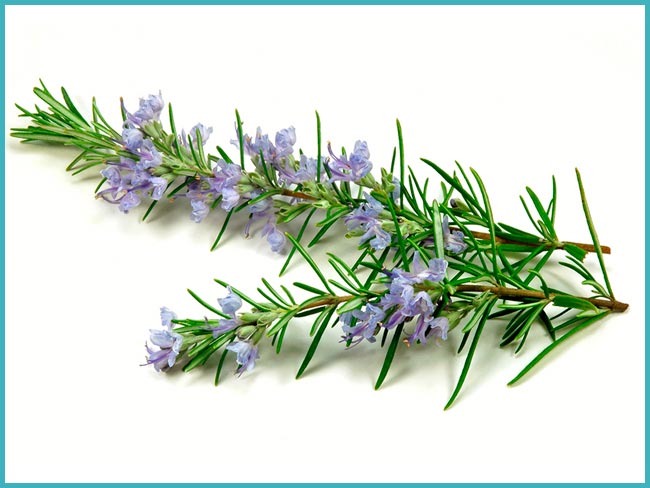

Rosemary bloom
Foreign breeding offers the following varieties:
- Severn Sea;
- Prostratus;
- Roseus;
- Albiflorus, etc.
Landing
Growing rosemary in the garden is preceded by planting. It is important to choose the right place and soil.
Optimal position in the garden
Rosemary is an extremely light-loving plant. To maintain optimal growing conditions close to those of his family, he needs to be provided with a warm place in the sun. Even hot sun rays at noon will not harm the plant.
The shrub should not be planted in partial shade.
Compatibility with other plants
Rosemary in the garden can be part of a Mediterranean-style arrangement or part of a herbal garden. You shouldn't be limited to one type.
We select the best landing place
Rosemary is a Mediterranean inhabitant. To grow it in other regions, you should create it as close to native conditions as possible. You need to take care of planting in advance: only in this case the gardener will get the desired result.
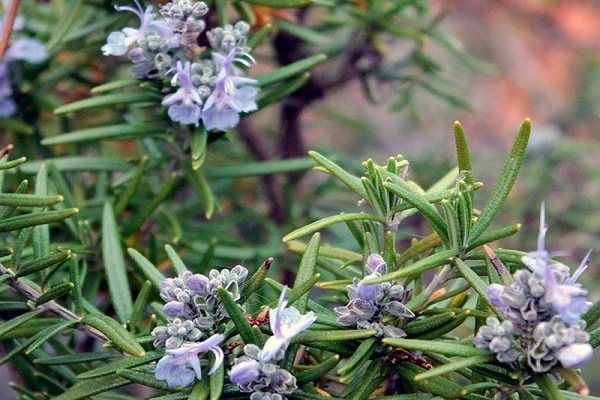

Accommodation at home
“Urban summer residents” also successfully grow rosemary. At home, it is realistic to create suitable conditions:
- put rosemary on the southern, southwestern or southeastern windowsill (if there are none, the western or eastern ones will do);
- the bush requires additional lighting (agrolamp is suitable);
- to ensure the required air humidity, it is recommended to pour a layer of expanded clay 2-3 cm thick over the ground of the pot (when it is moistened, the water evaporates, and the air around the rosemary becomes comfortable);
- plant roots need air access: rosemary should be planted in a clay container;
- the shrub should be replanted once a year (the pot should be 2/3 larger than the previous one);
- a guest from the Mediterranean is afraid of drafts: when airing, it is required to protect him with a plastic screen.
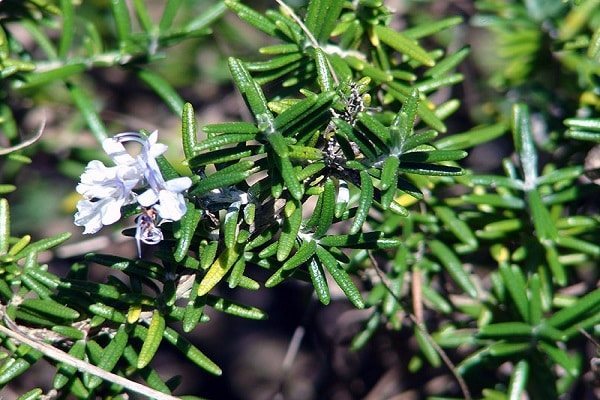

Subject to all the rules, the plant will delight the gardener with aroma and original flowers. But the British argue that at home rosemary grows only with good owners.
Landing in the country
Before planting on the site, the gardener should carry out preparatory work. In its homeland, rosemary is an unpretentious plant. But in regions with excellent climatic conditions, you need to carefully prepare. The shrub feels great in the place:
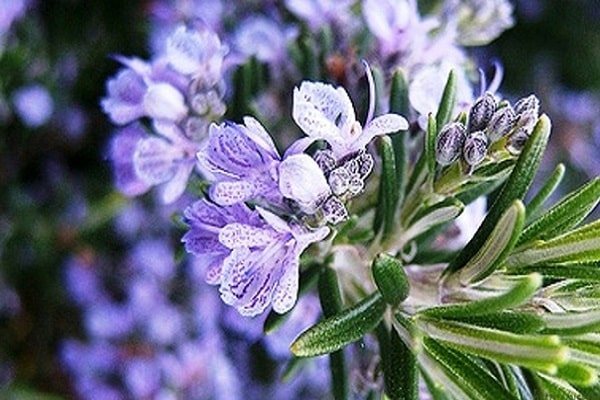

- the sunniest and warmest;
- sheltered from cold northerly winds;
- with deep groundwater;
- with alkaline, light soils.
Placement on the south side of the house is ideal. The wall will cover the rosemary from the north winds. It heats up during the day and gives off heat to the plant at night.
Rosemary does not tolerate shading. In insufficient light, it withers and sheds leaves.
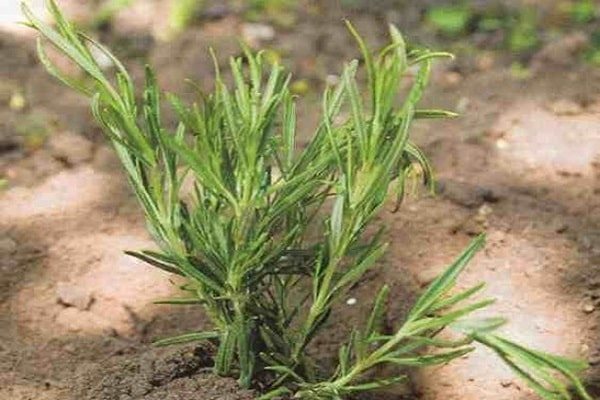

On flooded areas, drainage should be poured into the planting pit. Crushed stone, broken red brick, gravel, expanded clay are suitable. Layer thickness - 5-10 cm.
Rosemary placed in the garden does not tolerate weeds in the neighborhood: the soil around must be clean. In dry summers, mulching of the earth with a layer of 5-7 cm is allowed.
If the soils do not meet the required characteristics, it is necessary to carry out structuring in the intended planting site..
See also
Growing and caring for the garden
Since rosemary is not a very demanding plant (except for the lack of frost resistance), planting and care is carried out in the open field - in the garden, in the country and in pots. With its help, a garden, balcony or terrace can be filled with a festive mood, suitable for the warm Mediterranean.
Watering
Watering rosemary is carried out in moderation. At home, the shrub can extract most of the moisture it needs from the air. The rest is provided by an extensive, deep root system. Only during the summer heat should you give the shrub a little more water.
It is necessary to inspect the shrub, if the leaves wither - there is a moisture deficit. Excess moisture is much more dangerous for this plant than lack of moisture.
Watering is carried out using the "once, but well" method - then they wait until the soil in the container is almost completely dry. Then water again abundantly so that the water begins to flow out through the drainage holes in the pot. After 15 minutes, drain the water from the pan.
If the plant grows in the ground, it is better not to use the "services" of rain. During rainstorms, it is best to cover the plant, for example, with a large plastic bottle. Why such measures are desirable can be read in the description of diseases and pests below.
Top dressing
Fertilize the rosemary in moderation. In the spring, it is necessary to provide the shrub with some nutrients, preferably organic (compost). In the summer, the shrubs do not need feeding. For the last time before winter, you can feed the plant in August. If the bush grows in a pot, it can be fed every 2-3 weeks with small doses of fertilizer.
Fertilizers with a high nitrogen content should be avoided. Fertilizer is suitable for flowering plants.
When and how to prune rosemary?


Rosemary is rarely subjected to this operation.In the fall or spring, pruning of rosemary is carried out, which allows the shrub to release new shoots. Prune carefully so as not to cut old shoots. The secateurs must be clean and sharp.
After flowering, the plant is cut by 1/3.
Wintering
There are specially bred rosemary varieties that are resistant to low temperatures: Veitshöchheimer Rosmarin, Blue Winter, Madeleines Hill.
Rosemary is resistant to short-term frosts down to -15 ° C.
It is possible to grow rosemary in open (unprotected) ground in the suburbs of Moscow and the Leningrad region only near the southern walls and under cover in winter. However, the plant often freezes out. In our climatic conditions, temperature drops are observed, so the Mediterranean shrub may not survive the winter.
In unfavorable climates, it is safer to plant rosemary in pots. After the spring frosts, he can calmly decorate the garden until the autumn cold weather. The plant can remain outside until the temperature drops below freezing during the day. Light frosts at night should not harm the shrub.
In the rest of the period, it is necessary to provide the plant with wintering conditions.
- In a warm room... You can grow rosemary in an apartment - a place on the southern windowsill, away from heating radiators, is suitable. When wintering in a warm room, the plant is watered as the soil dries, and occasionally fed.
- In the greenhouse... It is advisable to provide wintering at low temperatures. The room should be bright, with a positive temperature up to 10 ºC, preferably 2-8 degrees C. An unheated room or greenhouse where the temperature does not exceed 5 degrees Celsius is preferable for wintering rosemary. During wintering, the bush should occasionally be watered moderately. Fertilizers are not applied, watering is aimed only at maintaining a slightly moist root system. It is worth paying attention to whether the shrub is suffering from any damage.
Watering is the most difficult art of wintering, it often happens that it is because of this that the rosemary does not survive.
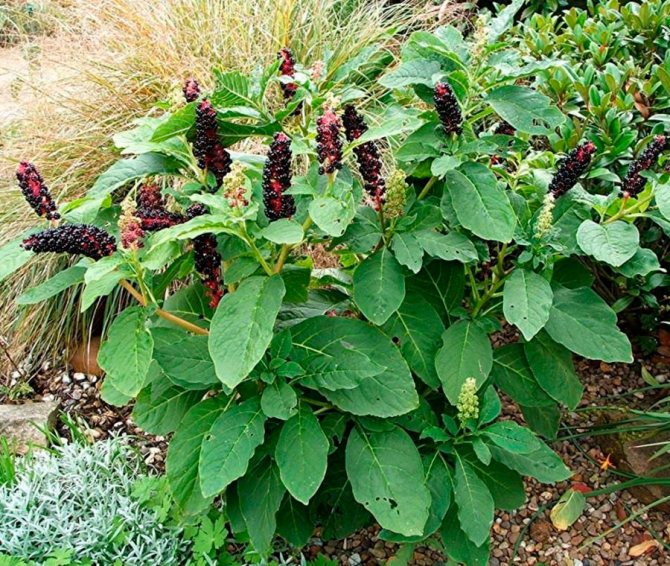

Photo. Rosemary on the balcony and in the room in winter at rest.
Reproduction of culture
Speaking about growing and nursing rosemary in the garden, the first thing to mention is plant propagation.
Medicinal rosemary
Growing cucumbers in the open field in the Moscow region
Several ways are possible:
- cuttings;
- layering;
- dividing the bush.
The easiest way to grow rosemary is by cuttings. In addition, landing such a plan will require minimal care.
The easiest way to get cuttings is to use annual young shoots. For this purpose, cut off the shoot, place the cut in a special solution to stimulate root growth and prevent the development of infections. After a couple of weeks, when the roots begin to sprout, it is time to plant the cutting in pre-prepared soil. Then you should take care of the planting in the same way as for an adult plant.
Another commonly used method of planting and growing rosemary in the country is by using layering. For open ground, this method of propagating and growing a crop is the most preferable. In this case, choose a strong, healthy low-growing shoot and bend it to the soil. In this position, the plant is fixed and buried. It is very important that the top of the shoot remains on the surface. Watering the layers should be parallel to the bush. The ground covering the plant should remain moist at all times. As soon as it becomes visually visible that the top has begun to grow and stretch upward, the layers must be carefully separated from the mother bush and transplanted to the garden bed.
By dividing the bush, it is most convenient to propagate rosemary growing indoors. This is done simply. The plant is removed from the pot, its root system is cleaned of soil and divided into several parts.
Important! When multiplying rosemary by division, each part should have a sufficiently developed root system and healthy shoots.
Slices can be sprinkled with charcoal powder, and then the culture can be planted in different pots.
Dividing the bush
Sowing with seeds and planting seedlings
A crop such as rosemary, growing in the open field in the Moscow region, is practically not carried out from seeds. But if suddenly there is a need for this, for sowing seeds it is necessary to wait until early spring comes. Whether it is the Moscow region, the Leningrad, Rostov region or any other region, when looking for an option on how to plant seeds from seeds in open ground, you will need to consider growing seeds at home. This will require any containers: pots or boxes. In principle, you can plant seeds directly in open ground. But in this case, you will need to wait until stable warm weather is established on the street. If cultivation is carried out in such a region as the middle zone of Russia, then the plant will barely have time to grow by the time autumn comes.
In order to be able to get a harvest by mid-summer, it is recommended to sow the seed in pots in February, and transplant the already grown seedling into open ground closer to May. More precisely, the moment when you can plant rosemary in open ground will tell the weather conditions. If there is a risk of frost, or the spring is late, it is better to postpone the planting of seedlings.
Most often, planting with seeds is practiced if the plant is planned to be grown in an apartment on a windowsill. In all other cases, such an approach turns out to be unnecessarily laborious and impractical.
How to propagate rosemary?
There are 2 ways to propagate a plant:
- The easiest way to reproduce is to buy the first plant, and then propagate it vegetatively.
- A more complicated method is to grow rosemary seedlings from seeds and then transplant them into soil, pots.
Growing from seeds
Rosemary seeds are sown in March-April. Seed germination is average, it is more convenient to sow more seeds, and then thin out the seedlings. The seeds are not covered with soil; they need light to germinate. Crops are placed in a warm, sunny place, covered with a film until germination, then the film is removed. The optimum soil is slightly alkaline or neutral.
Germination can take a long time - 3-4 weeks. Germination is uneven, requires a temperature of at least 20 ° C. When the seedlings are producing their first pair of true leaves, the seedlings must be carefully transplanted into small pots.
Note - a plant planted from seed grows very slowly in the first year.
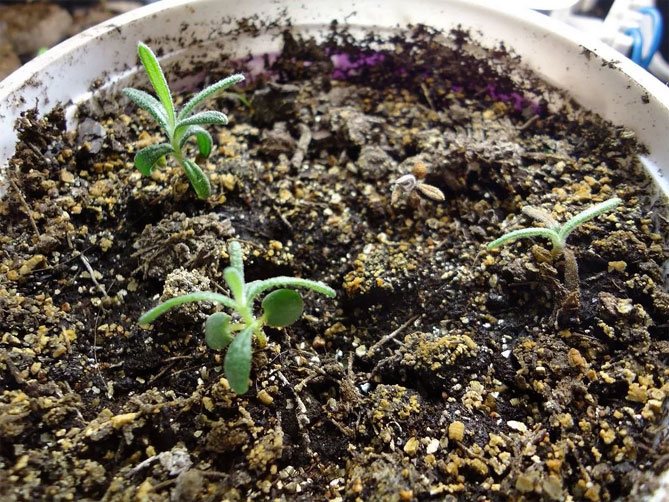

Propagation by cuttings
It is much easier to propagate rosemary by cuttings. For this, a 10-15 cm long stalk with several pairs of leaves from the tops of young shoots or from lateral shoots is cut from the plant.
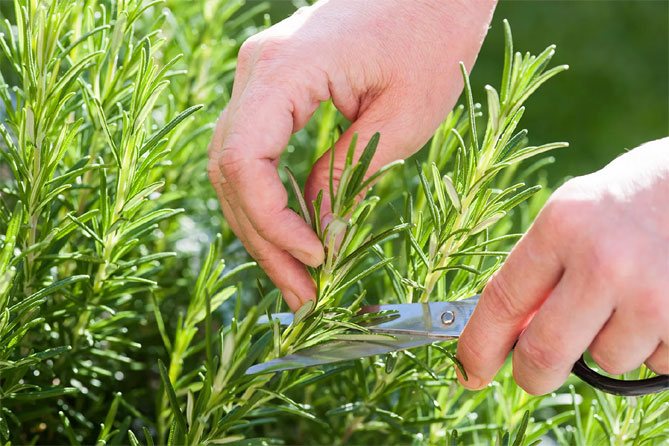

After placing the cuttings in the soil, after a few weeks (usually 3) roots appear. Removing the tip of the shoot will cause the plant to branch out and create a beautifully formed shrub.
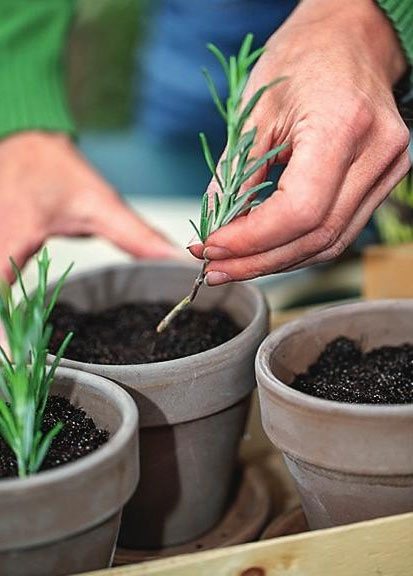

Cuttings can be cut for almost the entire growing season (except for hot and dry summer days and the flowering season). The use of preparations - rooting for plants increases the efficiency of rooting cuttings. Herbaceous cuttings can be rooted in water.
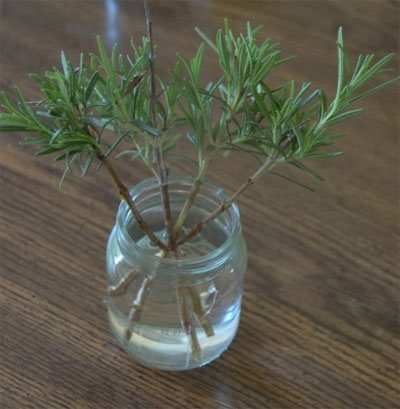

After rooting, young plants are planted in a mixture of garden soil and peat. In open ground, seedlings should be planted when the probability of frost passes (May).
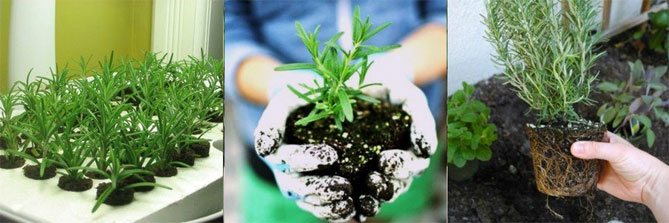

Preparing seeds for planting
Growing rosemary from seed at home begins with seed preparation. You can buy them in many specialized stores.
Rosemary seeds are very small and, unfortunately, their germination rate is relatively low. The reason for this is the high content of essential oils.The same problem occurs when growing carrots and basil. Therefore, it is advisable to subject them to germination before planting them in the ground. Otherwise, you can wait a long time and only after that, making sure that the wait is hopeless, replant the plant, losing several weeks or even months.
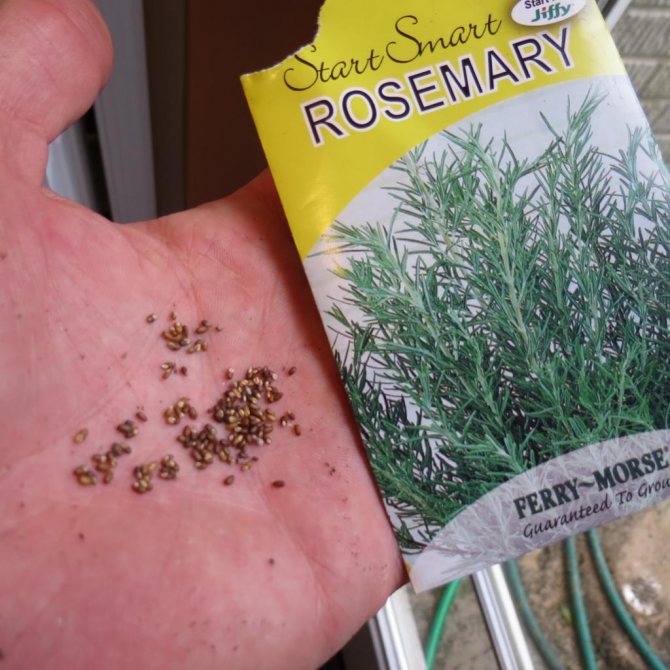

Germination is pretty simple. First you need to rinse the seeds with a weak solution of potassium permanganate. This will prevent the formation of mold and protect the young plant from infectious diseases. The easiest way to carry out the procedure is to simply pour a pinch of seeds (or as much as an amateur gardener needs) into warm water, and after a few minutes, gently pour it onto a sponge or gauze.
The treated seeds are then wrapped in a damp cloth and left in a warm, dark place for several days. All this time, care must be taken so that the matter does not dry out.
Usually, some of the seeds germinate within a few days. If two or three weeks have passed, and they still remain lifeless, you should get rid of these seeds and try a new batch.
Home care
Unfortunately, rosemary is not a potted plant like dracaena or ficus. You can grow it in pots, but in the summer it should be taken out into fresh air, in sunny places. At home, the plant is too dark (even on the southern window), too hot in winter. Growing in a pot will make it easier for the bushes to overwinter by moving them from the garden to the appropriate room. In any case, rosemary should not be left at home all year long.
It is very practical to have herbal flower pots on the windowsill in the kitchen. However, with a few exceptions, many kitchen herbs are not suitable for indoor cultivation - so is rosemary.
Diseases and pests
The following problems can arise when growing rosemary:
- powdery mildew;
- spider mite;
- coccids;
- mealybugs, or felt insects;
- whiteflies can attack weakened plants, especially in winter;
- rotting roots in too wet soil.
To prevent root rot, wilting of the tops of the shoots, rotting of leaves, it is necessary to provide sufficient drainage in the soil, adequate air circulation.
Yellow leaves most often indicate excess water - when rosemary leaves turn yellow, this is the most common symptom of poor watering.
White spots on leaves can have different causes:
- if the leaves are covered with a thin white layer, it is probably a fungal disease - powdery mildew. The affected leaves must be removed immediately.
- Mites can also be responsible for white spots.
White, relatively light spots may indicate the presence of thrips, which feed on plant sap. Diseased plants should be treated with a suitable preparation.
In many regions (Siberia, Ural), frosts destroy the aboveground part of the plant. To prevent this, the plant is planted in pots against the south wall to protect it from cold winds. Using mulch to protect the roots won't hurt either. In warm regions (Crimea, Krasnodar and Krasnodar Territory), rosemary does not need additional protection.
Features of growing in Siberia
If in the Urals the average winter temperature is about -18 degrees, then in Siberia it is even colder. In severe frosts, thermometer columns drop to 50 degrees. So, in Krasnoyarsk, the minimum temperature was recorded - minus 52.8 degrees. Of course, the aboveground part of the plant will die, even if you cover it, protecting it from wind and snow. Therefore, you cannot do without transferring rosemary to the house.
Important! Some people leave the plant in a pot, with which they place it in the soil, so that it is easier to extract it. Also, this method will eliminate damage to the root system.
Summer in Siberia is hot and dry, therefore, watering should be increased in comparison with central Russia, where rosemary feels quite comfortable.The main thing is to make sure that the soil does not dry out, focusing on the weather and remember that waterlogging is much more dangerous.
Collection and storage
Rosemary can be harvested by pruning. As a spice, rosemary is best used fresh regularly. It can be dried. For drying, it is best to harvest just before the plant blooms.
Rosemary can be hung dry by tying bundles of several stems together. The room should be warm and well ventilated. For "forced" drying in tumble dryers, remember that the temperature should not exceed 35 ° C.
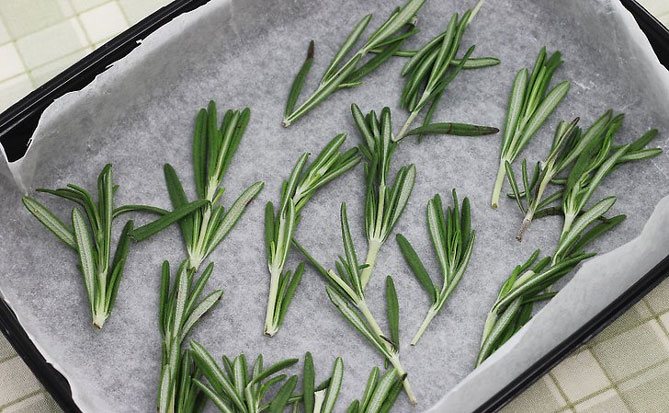

When the stems are dry, the leaves are separated.
There are other ways to preserve rosemary as well:
- freezing (sliced in a bag or filled with water to form herbal ice cubes),
- canning in vinegar, oil.
Store dried herb in a dry place, such as a paper bag.
Using
Although our cuisine is dynamically developing (pepper and salt are no longer enough), rosemary is not yet as popular as in French or Mediterranean cooking. While he loses many other spices, such as marjoram, basil, bay leaf, turmeric.
Rosemary is a spice with a specific, spicy-bitter taste and a characteristic strong aroma reminiscent of pine needles. The spice belongs to a group of natural additives used to season foods in very small quantities. For seasoning, use whole or ground leaves (fresh, dried, frozen). It is better to add the leaves at the end of cooking, they increase the clarity of the taste and aroma of the dish (so you cannot overdo it).
Rosemary works well with other herbs, but it can also be used on its own when preparing dishes from:
Pork chops marinated in a small amount of chopped rosemary leaves are delicious. The spice enhances the flavor of the dishes, adding a forest aroma to them.
In addition, rosemary works well as an addition to eggplant, potatoes, soups, meat, vegetables, sauces.


The spice is characterized by excellent taste as an additive in baked goods, marinades with the addition of olive oil, wine, garlic.
Lignified shoots without side branches and leaves are sometimes used instead of skewers.
The benefits of the plant
Before you learn how to grow rosemary at home, it's worth understanding its beneficial properties. And they are quite numerous.
To begin with, the plant itself has antiseptic properties. Therefore, harmful bacteria around it are actively killed. So, if you grow rosemary at home, you can be sure that many infectious diseases will bypass your family.
When added to food, rosemary leaves not only enrich the flavor palette of the dish, but also improve digestion, contributing to increased secretion of gastric juice. So this seasoning will be a good addition to the diet of people who have suffered a serious illness, when you need to quickly recuperate.
Finally, it is often advised to use it for hypotonic patients suffering from low blood pressure. It is also believed that rosemary can improve a person's memory and vision, at the same time stimulating cerebral circulation.
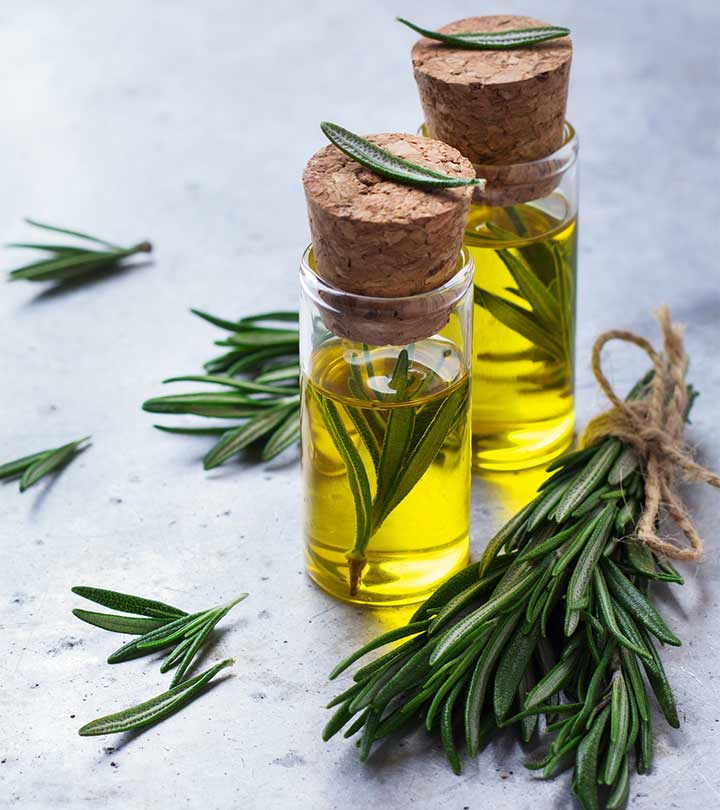

Not only leaves, but also young shoots can be eaten. However, you can also use dried herbs. It will be a great addition to meat, fish and vegetable dishes.
Composition and medicinal properties
Medicinal raw materials - rosemary leaf contains 1.5-2.5% essential oil. It consists of borneol, cineole, limonene, pinene and camphor. Also, rosemary leaves are a source of flavonoids, tannins, resins, saponins, phytosterols, rosemary acid, vitamins (A, C, B) and mineral salts (calcium, iron, phosphorus, magnesium, potassium, sodium, zinc).
Attention! Pure rosemary officinalis oil has a narcotic effect and a strong poisonous effect.Pregnant women should stop using it.
Rosemary has the following effects:
- antispasmodic,
- choleretic
- diuretic,
- carminative,
- antiseptic,
- sedative,
- astringent,
- bactericidal,
- strengthens the nervous system,
- stimulates appetite,
- dilates blood vessels.
Rosemary infusion improves mood, relieves mental fatigue, soothes and relieves stress. The infusion is used as a rinse for hair, strengthens it, prevents hair loss, removes dandruff.
Rosemary is used for:
- digestive disorders, digestive system problems;
- liver problems;
- intestinal cramps;
- states of mental stress, depression;
- for general strengthening of the body;
- to lower blood sugar levels;
- with muscle pain, neuralgia (externally);
- from dandruff and premature hair loss (applied externally).
Frequently asked Questions
Can you plant rosemary in your garden?
Unfortunately, the shrub is sensitive to frost and is recommended as a pot plant. Having decided to plant it in the garden, you should ensure optimal soil conditions, watering, sunny location and good protection of the bushes for the winter. Its aroma makes it an excellent plant to plant along garden paths and near the porch.
What temperature does rosemary stand?
In climatic zones where the temperature does not drop below 10-15 degrees below zero, rosemary does not need protection. It should be placed near the south wall to provide protection from the wind and provide additional warmth.
Can you prune rosemary when you feel like it or when you need to wait for the right moment?
The plant naturally grows up to 90-120 cm in height and width. Collect fresh leaves as a culinary spice. Large pruning should be planned from early spring to mid-summer. Stems that are darker than young or woody should not be trimmed, they probably will not grow back. It should be remembered that the bush will never take the shape of a perfect ball, because in nature the plant grows upward. But you can make the bush take a more regular shape by pruning it correctly.
If leaving rosemary in a pot for wintering, should it be pruned to stimulate growth?
Early spring is a great time to prune almost any perennial plant. First, the dead stems, free of leaves, are removed, then the plant is given the desired shape. Very old stems do not need to be cut, they are unlikely to grow back. If the size and shape of the bush suits, pruning is not necessary.
Rosemary is universally prized; it is used in cooking, perfumery and folk medicine. Regular use of this plant as a seasoning helps to strengthen the immune system and prevent the development of certain diseases of the gastrointestinal tract. In addition, rosemary is grown outdoors for decorative purposes - the graceful evergreen bush is an excellent addition to flower beds and flower gardens.
How to grow correctly
It is possible to grow a bushy perennial, which feels great in the Mediterranean climate (dry hot summers and wet cool winters), and in other climatic zones. The main thing is to do it right. The fragrant bush is very demanding on lighting and heat. And, although a plant that is more than three years old can tolerate frosts down to -15 degrees, it dies with a further decrease in temperature. In order for rosemary to please the eye for many years in a mixborder or in a green fence, a number of factors must be taken into account:
- the soil for its cultivation should be loose and dryish (excessive moisture and drying out are excluded, the soil can be any, but not acidic, preferably lime);
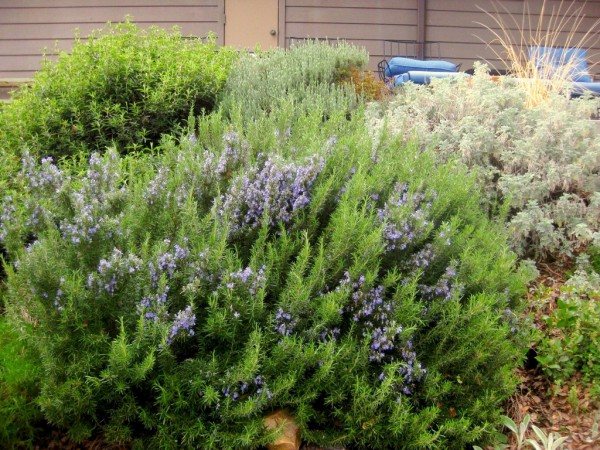

- moderate air humidity;
- requires periodic watering, without over-wetting the soil;
- shade and wind negatively affect rosemary.
General information
Rosemary belongs to the Yasnotkov family. It is an evergreen perennial common in the Mediterranean and parts of Europe. To grow outdoors, it needs mild winters, bright light and moderate moisture. Therefore, most often in natural conditions, rosemary settles on wooded mountain slopes; rarely found in the steppes.
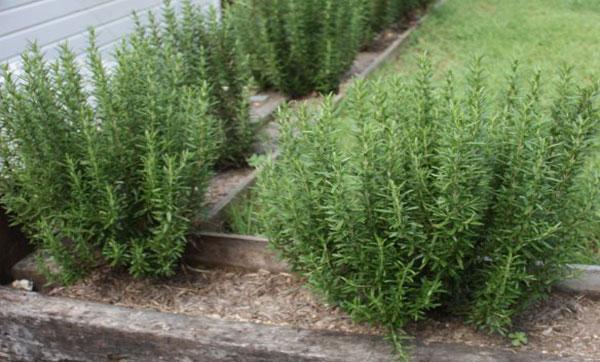

"Wild" rosemary is a half-meter well-branched bush with narrow, elongated, leathery, pine-like leaves. Due to the high concentration of essential oils, they have a specific aroma, a mixture of pine, eucalyptus, lemon and camphor scents.
Several centuries ago, when rosemary began to be used as a spice, breeding work began. The cultivated species are more compact, about 50-70 cm in height.
In our latitudes, only 2 of them take root:
- Spread rosemary, popularly known as "garden". Spreading, spherical bush. The plant lends itself well to the formation of pruning, therefore in the southern regions it is often used as an element of landscape design. Leaves are thin, graceful; young bright green, with age acquire a bluish tint. The main varieties are Corsican, Lavender and Creeping. The flowers, depending on the variety, can be purple, blue or purple.
- Rosemary is ordinary, it is also medicinal or fragrant. Stems are erect. In the open field, they can grow up to 1 meter. Leaves are tough, dark green; the amount of essential oils in them is higher. This species is more unpretentious to the conditions of detention, it can be planted in pots or balcony boxes. Flowers can be not only purple and lilac, but even white, blue or pink. Popular varieties that delight not only with their "usefulness", but also with high decorativeness: Tuscan Blue, Miss Jessopp's Variety, Roseus, Rosinka.
Description and types
The origin of this genus of plants, which are members of the Lamiaceae (Lipocytes) family, is attributed to the Ancient Mediterranean.
The genus spread right on the seashores, requiring moderate moisture, as well as bright light. To date, about 5 species have been studied, the most popular and common, of which - ordinary rosemary, or medicinal.
Scientists have two views on the origin of the name:
- Greek. "Low balsamic bush".
- Lat. "Seaside dew".
The metaphor of the second option is closer to the truth, since according to the testimony of the Greeks, rosemary grew directly from the puddles formed by the waves washed ashore.
External signs of a bush:
- Evergreen, oblong, needle-like foliage.
- Delicate blue, white or pink flowers.
- Strong scent that attracts humans but repels pests.
- The maximum height of the bush is about 2 m.
Ways and rules for planting rosemary in open ground
Rosemary can be combined with other plants or planted as a separate group. In regions with a temperate climate, this plant is used to decorate walls and fences, strengthen and plant retaining steps and alpine slopes.
Spread rosemary looks more impressive, but, unfortunately, does not tolerate winter frosts well. Fragrant or ordinary rosemary can be grown as a perennial even in the Leningrad region and the Moscow region, if there is a high-quality shelter.
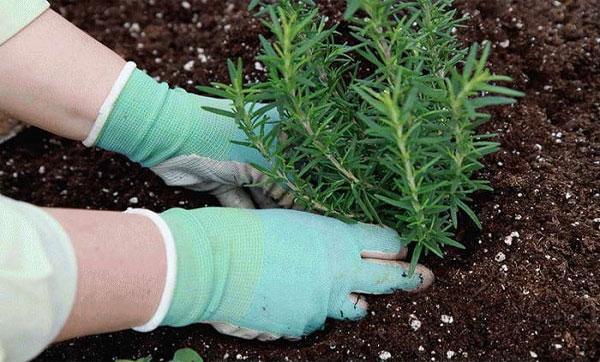

When planting rosemary, it is important to choose the right place:
- Exclude areas with stagnant groundwater and lowlands that are regularly flooded.
- Preference is given to places protected from drafts.
- Rosemary does not take root on acidic, heavy soils, especially loams.
With long-term cultivation of bushes in one place, half a meter is left between them; with a one-year, 10 cm is enough. The beds begin to be prepared in 2 weeks so that the soil has time to settle: they dig in, apply phosphorus-potassium fertilizers.
If necessary, neutralize the soil with dolomite flour or lime.Experienced gardeners prefer the first option, since the lime is quickly washed out, therefore it “keeps” the acidity at the required level for no more than a month. Loam is replaced by black soil. To loosen heavy soils, neutral coconut fiber is used, and not the usual peat, which has an acidic reaction.
Rosemary care
Caring for rosemary in your garden will not be a hassle - just follow a few simple rules. The right soil for rosemary is the basis for successful cultivation. Otherwise, it is unpretentious, rarely gets sick and is not attacked by pests.
Watering
Rosemary is a drought-resistant plant and does not require abundant watering in the garden. Excess moisture leads to exposure of the stems and death of the plant. However, it is better not to allow the soil to completely dry out, especially in the summer heat, otherwise the leaves will begin to turn yellow, and the concentration of essential oils in them will decrease. Artificial irrigation will be needed for the bushes immediately after planting, until the root system gets stronger, and during dry periods in summer. The rest of the time the rosemary has enough natural rainfall.
Loosening, weeding and feeding
One of the conditions for growing rosemary is regular loosening. The top layer of the earth is "puffed up" after each watering. So moisture is retained in the ground longer, and the roots receive the required amount of oxygen. Remove weeds during this procedure so that it does not "choke" the rosemary and take away nutrients from it.
When grown outdoors, rosemary practically does not need additional feeding. When digging for planting, complex long-dissolving fertilizers are introduced, for example, a mixture of potassium magnesium and superphosphate.
During the active growing season, nitrogen fertilizing is additionally introduced. The concentration is determined according to the instructions on the package. It is better to refuse organic matter - even in low concentrations, it is capable of provoking the development of root rot.
Pruning
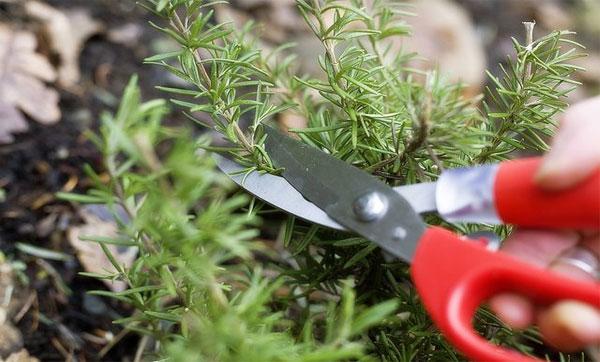

The stems of rosemary become bare as it grows, so it needs regular pruning. The bush begins to form in May. If it is grown as a perennial, the stems are shortened to 3-4 internodes of last year's growth. At the end of summer, erect species are once again shortened shoots, leaving no more than 1/3 of the new growth - this helps to "compact" the loose bush, giving it a beautiful shape. Pruning can be used for propagation.
Spread rosemary does not need pruning, it can be done as desired. Like the previous species, it tolerates the procedure well, is easy to shape and is suitable for creating bonsai. With the proper imagination and skill, you can make balls, pyramids and more complex "sculptures" from it. Every 6-7 years, the bushes rejuvenate, cutting them almost to the root.
Shelter for the winter
Wintering is the "weak point" of a thermophilic plant. In central Russia, prostrate rosemary can survive the winter if there is a high-quality shelter:
- shoots are cut to 2/3 of the length;
- roots are mulched with straw or sawdust;
- so that the mulch is not blown away by the wind, it is covered with branches or spruce branches;
- build a dome of dense fabric and polyethylene, tightly fixing it to the ground.
In cooler climates, such as the Urals or western Siberia, even such a shelter will not help the rosemary survive the winter. The bushes are dug up, transplanted into pots and kept until spring in a cool room, not higher than 12 degrees.
How to cover rosemary for the winter
When grown in the Moscow region, rosemary normally tolerates wintering even without preliminary preparation. Large bushes are well wrapped and covered for the winter. Fallen leaves and sawdust are suitable as a material. Cover with agrofibre.
The ideal option is preliminary pruning, planting in a container and placing on a loggia or balcony. This is a 100% guarantee that the tree will withstand the winter well and will not freeze. After the end of the autumn frosts, plant the tree in its original place.To reduce stress, the rosemary must be dug up with a clod of earth.


Reproduction methods and rules
Propagated by seed or cuttings, rosemary. You can use the methods of layering and dividing the bush, but, given the high efficiency of the first two methods, there is no particular need for this.
To grow this spicy crop from seeds, you will need containers, leafy soil mixed with sand and expanded clay. The seed can be purchased at flower shops. If you grow rosemary exclusively as a spice, choose undersized, early maturing varieties, for example, Tenderness, the leaves of which become usable after 3 months.
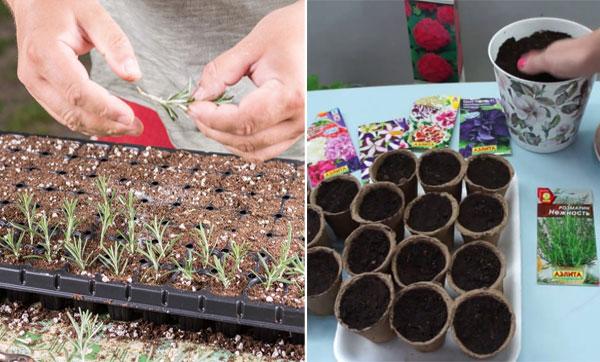

They begin to sow seedlings in March:
- Containers ½ are filled with drainage, soil is laid on top, watered abundantly.
- Spread the seeds at a distance of 1.5-2 cm, cover them with a thin layer of sand, lightly tamp them.
- The containers are placed in greenhouse conditions. Ventilate frequently, avoiding condensation.
- If necessary, moisten from a spray bottle, preventing overdrying of the top layer of the soil.
Seedlings appear by the end of the month. They are gradually weaned from greenhouses, placed on southern windowsills to prevent stretching. After 3-4 true leaves dive into separate containers, pinch. They are planted in the ground when the threat of return frosts has passed. Before disembarking, at least a week, they are accustomed to new conditions, gradually increasing the time spent on the street. Rosemary seedlings can be grown in greenhouses, and in regions with warm spring, sown with seeds directly into the ground.
Rosemary and cuttings propagate well. Cuttings of young shoots 5-10 cm long are suitable. The lower part of the shoots is freed from the leaves and dipped for half an hour in a solution of any root formation stimulant (Epin, Kornevin, succinic acid). It is better to use sand for rooting cuttings. You can also put them in a glass of water. To prevent souring of the liquid, a small amount of charcoal is added to it, for example, a burnt match.
The containers are placed in a warm, not lower than 20 degrees, well-lit place, protected from direct sunlight. Cover them with a jar or plastic bag. The greenhouses are ventilated several times a day to prevent condensation from getting on the cuttings. If roots sprout in the water, keep it constant. If necessary, moisten the sand, preventing it from drying out.
The roots appear after 3 weeks, and after 4, when they get stronger, the cuttings are ready to be transplanted into pots - on the street the immature seedlings will die. Use a mixture of sheet soil and sand, lightened with coconut fiber. After another 2 weeks, pinch the tops to stimulate the growth of lateral shoots. Further, the seedlings are looked after as adult plants. After a month, they can be planted in open ground.
Propagation by cuttings
Of the cuttings, the cultivation of a perennial is the most reliable, especially since an adult plant is easily cut by cuttings. Cut and place the cuttings in a vessel with water or in river sand, covering with a jar or cling film on top to ensure a comfortable microclimate. When the roots appear (after 3-5 weeks), the leaves are removed from the lower part of the cutting and planted in small containers (up to 10 cm in diameter), placing them in a warm, bright place. The plant can be sprayed to prevent the soil from drying out completely. Before planting, it will be useful to dip the root of the cutting into a solution with a rooting preparation.


In addition, the top of the sprouts must be pinned, which contributes to the development of a strong root system and branching. Interestingly, perennials can even be grown from cuttings bought at the supermarket. In this case, the top is used as a seasoning, and the main branch is planted in the ground, placing the container in a bright, warm place and watering it regularly. The growing branches are pinched.
Harvesting
Rosemary grown in the country is harvested at a certain time. The concentration of essential oils in the leaves peaks during or immediately after flowering. For perennial bushes, this time falls at the end of spring; seedling-grown rosemary blooms in August.
When harvesting, the aerial part is completely cut off. Shoots are tied in bunches and dried slowly in a dark, well-ventilated area. After complete drying, the raw material is crushed and stored in tightly closed glass containers. To preserve its beneficial properties, it is protected from direct sunlight and high humidity.
Ideal conditions for rosemary
The formation of so many useful characteristics presupposes many conditions. Rosemary is whimsical and scrupulous. Therefore, it is necessary to carefully monitor the process of its development from the first to the last stage.
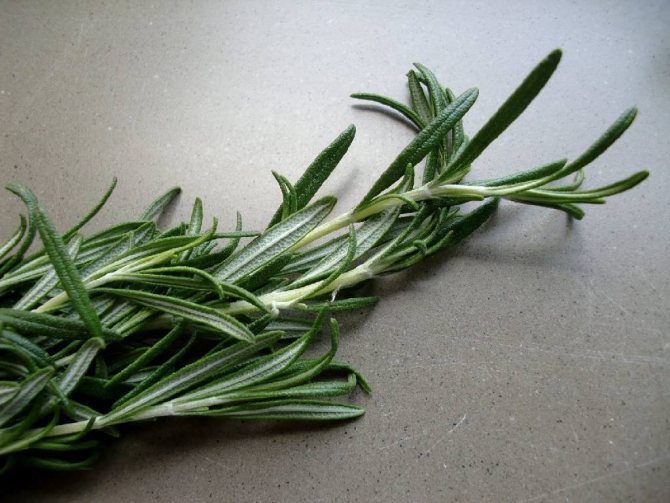

Factors that have a positive effect on the shrub:
- A source of abundant natural warmth and light (sun rays).
- Loose dryish soil.
- The air is moderately humid.
- Periodic watering.
A negative effect on perennials is exerted by:
- Wind.
- Shadow.
- Excessive moisture.
- Acidic environment (soil).
- Frost below 10 ° C.

